Introduction
NORDHEIM, Texas — School Superintendent Kevin Wilson tugged at his oversized belt buckle and gestured toward a field less than a mile from Nordheim School, where 180 children attend kindergarten through 12th grade.
A commercial waste facility that will receive millions of barrels of toxic sludge from oil and gas production for disposal in enormous open-air pits is taking shape there, and Wilson worries that the ever-present Texas wind will carry traces of dangerous chemicals, including benzene, to the school.
“Many of these students live outside of where they could be exposed,” said Wilson, a contemplative man with a soft Texas accent. “But we are busing them to the school, putting them in the direct path of something that could be harmful to them. It makes you think: Are we doing what’s best for the students?”
Along with Nordheim’s mayor and other angry residents, Wilson is trying to stop the 204-acre facility, but he faces an uphill battle. In Texas, as in most states, air emissions from oil and gas waste are among the least regulated, least monitored and least understood components in the extraction and production cycle. Although the wastewater and sludge can contain the same chemicals used in hydraulic fracturing and other processes — chemicals known to affect human health —little has been done to measure waste emissions or determine their possible impact on nearby residents.
This gap can be traced to decisions Congress and the U.S. Environmental Protection Agency made decades ago, when oil and gas producers lobbied hard to get most of their waste exempted from federal hazardous waste regulations.
In 1988 they succeeded, even though a 1987 EPA study concluded that 23 percent of the waste samples the agency had collected contained one or more toxic compounds at levels 100 times higher than is considered safe for humans. The EPA estimated that without the exemption, 10 to 70 percent of oil and gas waste could be considered hazardous.
Still, the report recommended granting the exemption. The expense of disposing of so much hazardous waste would slow U.S. oil and gas production, the authors said. And there weren’t enough hazardous waste facilities to handle that much waste.
For the industry, and for people who live and work near commercial waste facilities, the distinction between hazardous and non-hazardous waste is critical when it comes to air quality.
Pits at hazardous waste sites must be covered — open-air pits are not allowed. Even the transfer of the waste is done through pipes, so emissions don’t escape into the air. The EPA requires some type of air monitoring, too.
Pits at non-hazardous facilities, in contrast, allow chemicals in the waste to evaporate directly into the atmosphere. States decide how and where facilities are built and what, if any, monitoring systems they must have. A recent EPA review of oil and gas waste regulations in 27 states, including Texas, Pennsylvania and Colorado, found that none had rules requiring regular air monitoring at commercial solid waste facilities.
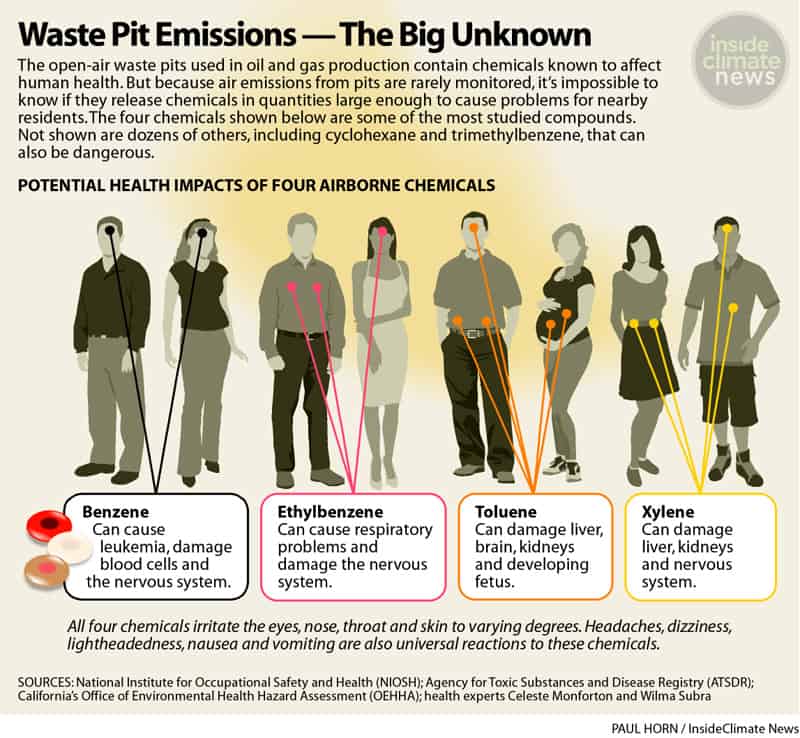
Nathan Richardson, an assistant professor of environmental law at the University of South Carolina who studies waste rules, said most states, including Texas, focus on safeguarding ground and surface water, protecting wildlife, keeping out trespassers and restoring land after pits are closed. “None of it that I remember has to do with air,” he said.
Travis County Assistant District Attorney Patricia Robertson, the environmental crimes prosecutor for the Texas Environmental Enforcement Task Force, has been frustrated for years because the federal exemption makes it almost impossible to prosecute waste facilities for anything more serious than dust or foul odors, which are considered nuisances under Texas law.
“Until the law is changed, people might be exposed to what ordinarily might be considered hazardous waste,” Robertson said.
James Langhorne, chief operating officer of Inland Environmental, a disposal facility south of Houston, bristles when he hears criticism of waste disposal facilities: “We follow the standards set by the people elected to set those standards.”
Last year, U.S. Rep. Matthew Cartwright, a first-term Democrat from Pennsylvania, drafted a bill that would remove the industry’s hazardous waste exemption, which he said is based not on science but on the industry’s successful lobbying. But all of the bill’s 70 co-sponsors are Democrats, and the bill is stuck in the Subcommittee on Environment and the Economy.
“I don’t expect it will be an easy fight, but it’s the right thing to do,” Cartwright said.
The hazardous waste exemption has saved oil and gas producers huge amounts of money.
When the EPA was considering the exemption in 1987 it estimated that treating the waste as hazardous could result in $700 million to $4.5 billion in extra costs to consumers.
An executive with a national waste disposal company said that disposing of hazardous waste can cost up to three times as much as disposing of non-hazardous waste, depending on the composition of the load and other factors.
Bill Keffer, a visiting professor of law at Texas Tech University School of Law and a former state legislator, said that if the industry’s waste were re-classified, the ripple effects would be felt from industry boardrooms to the gas pumps.
“What makes economic sense now to develop these new [shale] plays might not make economic sense once this new expense is factored in,” said Keffer, who once worked as a corporate lawyer for gasoline-producer ARCO. “So removing the exemption could have a chilling effect on future development.”
Alex Mills, president of the Texas Alliance of Energy Producers, said local economies would suffer if production declined, and the cost of electricity produced by gas-powered generating plants would go up. “The unintended consequences would be very far reaching,” he said.
But David Brown, a toxicologist and adjunct professor of applied ethics at Fairfield University in Connecticut, said using a standard cost-benefit analysis when people’s health may be at risk shows that society has lost its moral compass.
“Someone is putting a value on human life and saying the benefit to the larger society justifies the risks to people,” Brown said.
“We have to look deeply at why people’s lives place second in this analysis.”
Little accounting for lots of waste
When the federal exemption for fossil fuel waste was approved in 1988, oil and gas production in the United States was dropping and finding more domestic supplies was a national imperative. The idea that reclassifying the industry’s waste as hazardous might further slow oil production was alarming.
Today, however, domestic production is booming because of the development of hydraulic fracturing, or fracking — the process of blasting water, chemicals and sand down a well to crack open bedrock and tap deeply buried fossil fuels. The United States has so much oil and gas, in fact, that the industry is lobbying Congress for permission to freely export it.
It’s impossible to say exactly how much waste the oil and gas boom is generating, or how it’s being disposed of. Neither the EPA nor the federal Energy Information Administration collects those statistics. The American Petroleum Institute, an industry trade group, estimated that 18 billion barrels of waste were produced in 1995, before fracking began, but an API spokesman said those numbers haven’t been updated.
The bulk of the waste is dirty water from fracking, which contains salts, fracking chemicals and heavy metals from underground. After as much oil and gas as possible is removed from the water, it’s either used to frack new wells, or injected deep underground for permanent disposal. A handful of states — including Texas, Utah, and New Mexico — also allow it to be stored in open-air pits, called evaporation ponds.
The industry’s solid waste — dirt, mud and watery sludge — is generally trucked to waste facilities and dumped into large open pits where it remains until it becomes a gooey sludge the consistency of cake batter. Then it might be spread on open plots of land and tilled into the soil, a practice called “land farming.” Or it might remain in the pits until they are filled and covered with dirt for permanent storage. Some waste may also be mixed with asphalt and used to pave roads. In many states, solid waste can also be buried at drilling sites.
Each of the three solid waste disposal pits Pyote Reclamation Systems LLC wants to build near Nordheim School will be as large as nine city blocks and can hold 720,000 cubic yards of waste, enough to fill the Washington Monument 19 times.
Pyote also wants to build a second, larger facility 3½ miles away. It will occupy 574 acres and, unlike the Nordheim site, will include two open evaporation ponds for wastewater. When filled to capacity, the facility will hold 10 million barrels of solid and liquid waste, enough to fill 62 Shamu tanks at San Antonio’s SeaWorld.
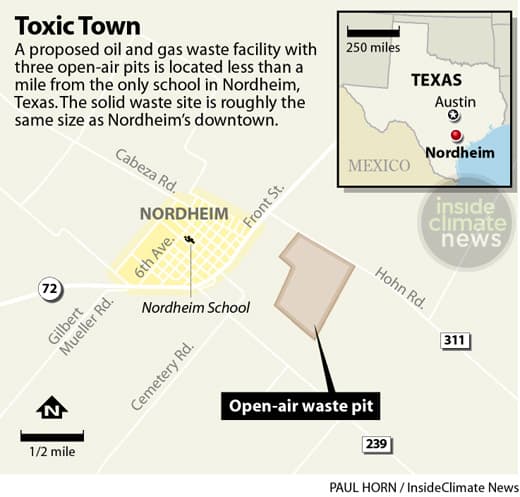
‘That just ain’t right’
In September, about 30 Nordheim residents made the 230-mile round-trip drive to a state hearing in Austin to oppose the Pyote facility near the school. Although the final permit hasn’t been issued, Pyote has already bulldozed the land, put up a fence and built a power station.
The hearing lasted two and a half days, with lawyers and expert witnesses speaking for both sides. Pyote’s attorney, John Soule, used the federal hazardous waste exemption as a drumbeat in his opening remarks, saying five times in the first two minutes of his presentation that the material going into the pits wouldn’t be hazardous.
“The waste that will be received is … exempt oil and gas waste — by definition nonhazardous,” he told the commission hearing officers a minute into his presentation. Twenty seconds later, he made the same point: “In other words, again, only nonhazardous oil and gas waste subject to the commission’s jurisdiction would be received and disposed of at this facility.”
In the audience was 70-year-old Paul Baumann, who was born in Nordheim and graduated from Nordheim School. Baumann has never been much of an activist. But a few months ago, he grabbed an armful of protest signs emblazoned with a skull and crossbones and the words “Don’t Dump On Nordheim” and posted them on fences and gates near the Pyote site.
“They want to poison our water and air with all this hazardous stuff they’re bringing in,” Baumann said. “That just ain’t right.”
Also in the audience was state Rep. Geanie W. Morrison, a Republican who has represented Nordheim in the House since 1999 and last year received an 87 percent approval rating from the Texas Association of Business.
“I fully recognize there is a need for the facilities that we are talking about at this hearing” Morrison told the crowd. “I am not naïve that we always be confronted with the ‘Not in my backyard” position. But this is truly in the backyard of the entire city of Nordheim.
“It might make business sense. But I have yet to see that it makes logical sense for this community.”
Murky emissions data stirs worry
Because Texas, like most states, doesn’t require commercial facilities to monitor and collect data about their waste emissions, it’s impossible to know whether chemicals are drifting into the air at levels high enough to affect public health.
Oil and gas waste includes volatile organic compounds (VOCs), including benzene, toluene, ethyl benzene and xylene. Depending on the concentration and length of exposure, these chemicals can cause a range of ailments, from minor headaches to neurological damage and cancer. But there has been little or no research on how years of exposure to low doses of these chemicals might affect the general public, including children, the sick and the elderly.
There’s also little information about what happens when people are exposed to many chemicals at once, said Stuart Batterman, a professor of environmental health sciences at the University of Michigan’s School of Public Health. While the concentration of each chemical may meet current health guidelines, he said, “there might be an issue [when] taking the sum as a whole.”
A few small studies involving untreated drilling wastewater — the part of the waste stream that is usually found at drilling sites and has the highest concentration of chemicals — have produced data and anecdotal evidence that emissions can reach dangerously high levels.
In 2011, Gabrielle Petron, a National Oceanic and Atmospheric Administration scientist working at the University of Colorado, was trying to determine whether emissions from two well sites in northeastern Utah were causing a rise in winter ozone, a major respiratory irritant. During the course of the work, Petron and her team of researchers discovered “out of this world” levels of benzene and toluene coming from small ponds of untreated wastewater near the well sites. At one point, the vapors were so thick that Petron felt nauseous and moved her team out of the area.
“You had to go upwind of the ponds,” she said. “You could not stand to be in the downwind emission stream.”
The lack of health data, plus the EPA’s decision to classify oil and gas production waste as non-hazardous, makes it almost impossible for residents to use air emissions as grounds to object to oil and gas waste operations.
In Texas, a bifurcated regulatory system adds to the confusion.
Construction permits for commercial waste facilities are issued by the state’s Railroad Commission, the primary regulator for the oil and gas industry. The agency considers the projects’ effects on water, but not on air quality. That responsibility rests with the Texas Commission on Environmental Quality.
The TCEQ allows some facilities to self-audit air quality under a special category of rules called “permits by rule,” which means the agency might not even know the facilities exist.
Other facilities have somewhat stricter air permits, which require them to register with the TCEQ. The permits limit annual emissions. But because they don’t require the companies to regularly monitor their emissions or report them to the TCEQ, it’s impossible to verify that the limits are being met.
For residents, determining what kind of permit a particular facility has is almost impossible, because the agency has a backlog of air permit applications and paperwork. Of the state’s 67 largest commercial surface waste facilities, only 10 are listed on the TCEQ’s website as having permits. Of those, four have or have applied for the stricter permits. The other six have permits by rule.
TCEQ spokeswoman Andrea Morrow said the agency’s focus is on dust and nuisance odors.
“In most cases the liquids have very small concentrations of volatiles or sulfur, thus evaporative emissions are very insignificant but in no case may they cause a nuisance,” Morrow said in an email exchange with InsideClimate News.
Morrow said waste pit operators also must comply with the Texas Administrative Code, which prohibits anything that could “adversely affect human health or welfare.”
The TCEQ measures general air quality “rather than pollutants from specific sources,” Morrow said. To do that, she said the agency oversees “one of the most extensive air toxics monitoring networks in the country.” In 2013, she said it loaded data from more than 200 monitoring sites statewide into the TCEQ database.
But an 18-month investigation by the Center for Public Integrity and InsideClimate News revealed that the agency’s program is severely limited in some oil and gas production areas. For example, the Center and InsideClimate News reported in February that the TCEQ had only five permanent air monitors in the heavily drilled Eagle Ford Shale in South Texas, an area roughly twice the size of Massachusetts. The agency recently announced it will add another monitor in the area.
Because waste facilities fall under the jurisdiction of two Texas regulatory agencies, people are often confused about where to turn for help.
About 50 miles southwest of Houston, officials at the Rice Consolidated Independent School District, which serves more than 1,100 students on six campuses, want to know more about emissions from a commercial oil and gas waste facility that sits within a couple miles of two schools.
But Michelle Morris, the district’s lawyer, said a TCEQ official claimed the agency has no jurisdiction over the emissions, and the Railroad Commission said the same thing. The district has contacted the EPA but hasn’t gotten a response.
“I’m sure there is an agency responsible for monitoring the air,” Morris said, “but we can’t figure out what that agency is.”
Ilan Levin, associate director of the Environmental Integrity Project’s chapter in Austin, thinks the state’s regulatory process is intentionally ambiguous and confusing.
“All of the rules are vague enough that it allows the industry to game the system,” Levin said. “They can interpret the rules for their benefit.”
Former EPA Regional Administrator Al Armendariz, who resigned in 2012 amid criticism of his hardline stand against lax oil and gas rules in Texas, said the TCEQ’s permitting system shows that “in their mind they have already made a determination that such facilities will not have a human health impact.”
Armendariz now leads the Beyond Coal campaign for the Lone Star Chapter of the Sierra Club.
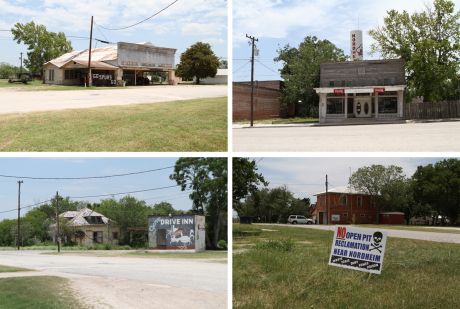
Health concerns not enough for regulators
In 2010, people living downwind from a waste facility in Cleburne, Texas complained to the TCEQ “about the odor causing headache and nausea and forcing them to discontinue their outdoor work and to move indoors,” according to a TCEQ report obtained under the Texas Public Information Act.
A TCEQ investigator confirmed the odor was coming from pits containing oil field waste, according to the report. He could smell a natural gas odor, but said his breathing wasn’t affected.
The inspector took an air sample that disclosed trace amounts of benzene, toluene and ethylbenzene, but in concentrations below levels Texas considers a health hazard. The TCEQ determined there had been no violations.
A Borden County couple, Joel and Betty Dennis, had a similar experience when they complained to the TCEQ between 1995 and 2003 about foul odors coming from a Westex Systems disposal facility three miles from their house.
Sometimes the odors were so bad that the Dennises said they felt nauseous and stayed indoors. But when the TCEQ investigated, it found no violations.
On another occasion, the couple complained to the Railroad Commission about a foul smell characteristic of hydrogen sulfide, a potentially lethal gas. Again, there was an investigation. But the commission’s only recommendation was that the company should erect some sort of cover over the pits to keep birds out.
In 2008, the Dennises discovered that Westex had applied to the Railroad Commission for a permit to build an additional pit on the site. The fifth pit—375 feet long, 135 feet wide and 18 feet deep—would hold 163,000 barrels of oil and gas waste, according to commission documents.
Outraged, the Dennises drove almost 700 miles round trip to a commission hearing in Austin to oppose the new pit. Despite their plea, the company’s application was approved.
“Concerns about odor and adverse health effects as a result of operation of the facility do not provide a basis for the Commission’s denial of the application of an additional pit at the facility,” the examining officers said in their recommendation to the commission.
The Westex Systems facility closed last year, not because of complaints but because its five pits were filled to capacity with 1.1 million barrels of waste.
“Against an industry that is so much of the Texas economy, we didn’t count,” Betty Dennis said.

Tiny notice sparks huge protest
The lack of scientific information about oil and gas waste emissions, plus the lack of regulations, leaves residents and local officials who object to gas and oil waste sites with few options.
Kathy Payne discovered that in April 2013 when she got to her office just around the corner from Oralia’s beauty shop to begin another uneventful day as mayor of Nordheim, population 307.
After settling into her worn leather chair, she opened the latest edition of the local weekly newspaper. Starting at the front, she read about a standout high school track star and an upcoming community potluck.
But it was a tiny notice at the back of the paper that caught her attention: an announcement that an application had been filed with the Railroad Commission for a permit to build a waste facility on the outskirts of Nordheim. At 204 acres, it would be nearly the size of her town.
“Oh, holy hell! What’s this?” Payne remembers shouting.
Texas law requires companies that want to build waste facilities to notify adjacent landowners. City officials also must be notified—but that requirement didn’t apply in this case because the facility sits outside Nordheim’s city limits.
Paul Baumann and other landowners whose properties adjoin the Pyote site received thick blue binders from the company, filled with schematics and technical data about the proposed facility. They formed a grassroots opposition group called Concerned About Pollution, or CAP, and held their first meeting under the gazebo in Nordheim’s Jubilee Park.
CAP now has about 400 members and has raised roughly $20,000, most of it already spent on attorney and consultant fees.
As the group coalesced, Baumann said Pyote took notice and made some alterations in its plans for the facility. But CAP wants the application denied, not adjusted, and he worries the company will simply outlast them.
“We have the determination but they have all the money,” he said.
George Wommack is CEO of Petro Waste Environment LP, whose Pyote Reclamation Systems is building the Nordheim facility. He points to the federal hazardous waste exemption as proof that the sludge his company will be receiving at the Nordheim site is harmless. If school superintendent Wilson or Mayor Payne or anyone else has a gripe, Wommack said, they should take it up with the EPA.
“Most of what we’re dealing with here is dirt,” he said.
In its application to the Railroad Commission for a construction permit, Pyote said it didn’t need a TCEQ air permit. But in a recent interview, Wommack said the company will hire consultants to determine whether a permit is needed.
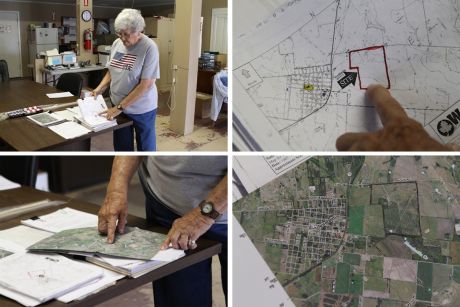
Nationwide, rules begin to tighten
As oil and gas development spreads across the United States, more communities are raising concerns about the industry’s waste.
At least 20 towns, districts, counties or states have passed laws regulating various parts of the waste disposal process.
Longmont, Colo., Pelham, Mass. and Buffalo, N.Y. have banned the storage, treatment and disposal of fracking wastewater within their borders. Ohio has banned new wastewater ponds, and Pennsylvania is trying to ban them. In 2012 Vermont became the first state to indefinitely prohibit the collection, storage and treatment of fracking waste. Connecticut passed a three-year ban this year and a waste ban bill is pending in Massachusetts.
But some places are resistant to change — and some have even reversed strict waste rules.
New Jersey’s legislature has twice rejected legislation that would keep fracking waste from entering its borders.
New Mexico passed some of the nation’s strictest waste pit and pond rules in 2008 under Democratic Gov. Bill Richardson. But in 2013, under a Republican administration, they were weakened. The New Mexico Environmental Law Center has filed a lawsuit on behalf of Earthworks’ Oil and Gas Accountability Project challenging the slimmed-down rule.
At the national level, Matt Cartwright, the Pennsylvania congressman who is trying to repeal the industry’s hazardous waste exemption, campaigned on a promise he would fight to make sure that fracking doesn’t pollute air and water. Cartwright says he isn’t opposed to drilling, but wants it done safely.
“I think requiring responsible regulation of the fracking industry and responsible handling of hazardous waste is the least we should be doing,” he said.
So far, Cartwright’s bill — the Closing Loopholes and Ending Arbitrary and Needless Evasion of Regulations Act, or CLEANER — has gone nowhere. But in August, he scored a small victory when Texas Rep. Eddie Bernice Johnson became CLEANER’s 70th co-sponsor.
Johnson, whose North Texas district includes part of the Barnett Shale, declined to be interviewed but said in a written statement that “oil and natural gas companies should be held to the same standard as other industries.”
“If we are going to ask the EPA to effectively protect the public health and the environment, we should not make special exceptions for an industry that has a long history of polluting the environment,” Johnson said.
In May, more than 50 Texas community leaders urged Democratic Congressman Lloyd Doggett, whose district includes Austin, to co-sponsor the bill.
Their letter notes that open pits of drilling mud waste contaminated four family water wells in Montague County in 2011 and pleads: “With the state of Texas failing to protect us, we need the federal government to act to protect communities in Texas from fracking.”
As of Wednesday, Doggett had not signed as a co-sponsor. His office did not respond to requests for comment.
A question of common sense
School Superintendent Wilson, who wears a burgundy polo shirt with a yellow embroidered Nordheim Pirates logo, is still struggling to understand the logic of putting a waste facility so close to his school.
As he speaks, the trees rustle in a persistent and predictable wind that swirls across the playground after sweeping across the Pyote site. It blows almost every day and is as much a part of life in this small South Texas community as 4-H shows and rodeos.
“There is a lot of area out here for things like this,” Wilson said. “Common sense says you don’t put something like this so close to a community and a school. Just think about it.”
Like so many others in Nordheim and across the Eagle Ford, Wilson doesn’t oppose oil and gas development. It has brought prosperity to his town, which last year approved a $3.7 million bond for renovations to his 65-year-old school.
But with that good fortune comes responsibility, Wilson said: “Doing the right things can’t get lost.”
The Center for Public Integrity and InsideClimate News have been investigating oil and gas air emissions in Texas for 18 months. This story, written by David Hasemyer and Zahra Hirji of InsideClimate News, was produced in partnership with Inside Energy and its public radio affiliates. Lisa Song, Hannah Robbins, Jim Morris, David Martin Davies and Eleanor Bell contributed to the reporting.
Read more in Environment
Environment
Chemical Safety Board cuts investigations amid alleged mismanagement
Allegations of severe mismanagement continue to haunt the Chemical Safety Board, tasked with investigating industrial chemical accidents
Environment
Environment stories you may have missed
The Center for Public Integrity’s best environment stories from 2014
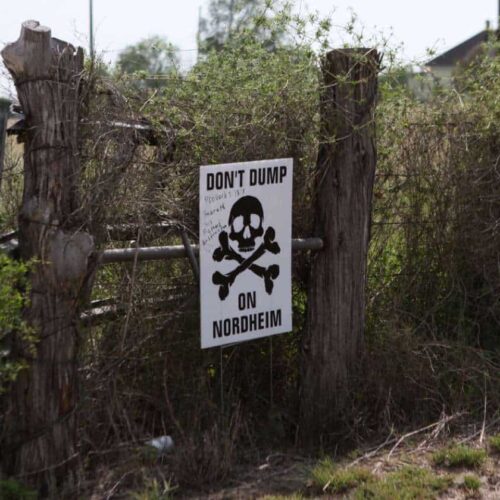

Join the conversation
Show Comments